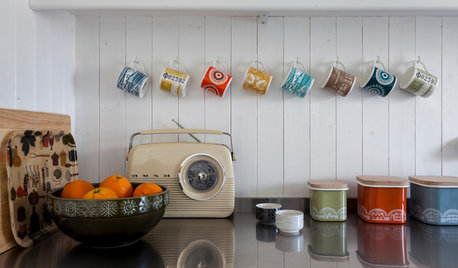Watering Schedule / Compost Tea
tkgarden3
10 years ago
Related Stories

GARDENING GUIDESGet on a Composting Kick (Hello, Free Fertilizer!)
Quit shelling out for pricey substitutes that aren’t even as good. Here’s how to give your soil the best while lightening your trash load
Full Story
ENTERTAININGThe Busy Mom's Guide to Throwing a Kids' Holiday Tea Party
Even Fancy Nancy would thrill to be a guest at this easy event, where no one will know the shortcuts but you
Full Story
SAVING WATERXeriscape Gardens: How to Get a Beautiful Landscape With Less Water
Conserve water and make gardening much easier with the xeriscape approach’s 7 principles
Full Story
SAVING WATER11 Ways to Save Water at Home
Whether you live in a drought-stricken area or just want to help preserve a precious resource, here are things you can do to use less water
Full Story
GARDENING GUIDESEssential Watering Tips for Your Edible Garden
To give your edible plants just what they need, check out these guidelines for how, when and how much to water
Full Story
GREEN DECORATINGEasy Green: Big and Small Ways to Be More Water-Wise at Home
These 20 tips can help us all make the best use of a precious resource. How do you save water in summer?
Full Story
GREEN BUILDINGHow to Harvest Rainwater for Your Garden
Conserve a vital resource and save money by collecting stormwater for irrigation in a barrel or tank
Full Story
GARDENING GUIDESHouzz TV: Make a Worm Bin for Rich Soil and Happy Plants
A worm-powered compost bin that can fit under a sink turns food scraps into a powerful amendment for your garden. Here’s how to make one
Full Story
PRODUCT PICKSGuest Picks: Fall Entertaining Favorites
Make autumn feasts a piece of cake with chic compostable plates, pretty glasses, pie accessories and more
Full Story
FEEL-GOOD HOMERegain Calm With a New Weekly Routine
Having a day-by-day housekeeping schedule makes the chores a lot more manageable
Full StoryMore Discussions








campv 8b AZ
lazy_gardens
Related Professionals
Ashland Landscape Architects & Landscape Designers · Mitchellville Landscape Architects & Landscape Designers · White Oak Landscape Architects & Landscape Designers · Jackson Landscape Contractors · Brookside Landscape Contractors · Deerfield Landscape Contractors · Hayden Landscape Contractors · Setauket-East Setauket Landscape Contractors · South Hackensack Landscape Contractors · Woodland Landscape Contractors · Shafter Landscape Contractors · Atwater Carpenters · Hayward Carpenters · Margate Carpenters · Sunset Carpentersaztreelvr
Fascist_Nation
therylmccoy